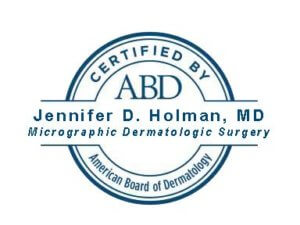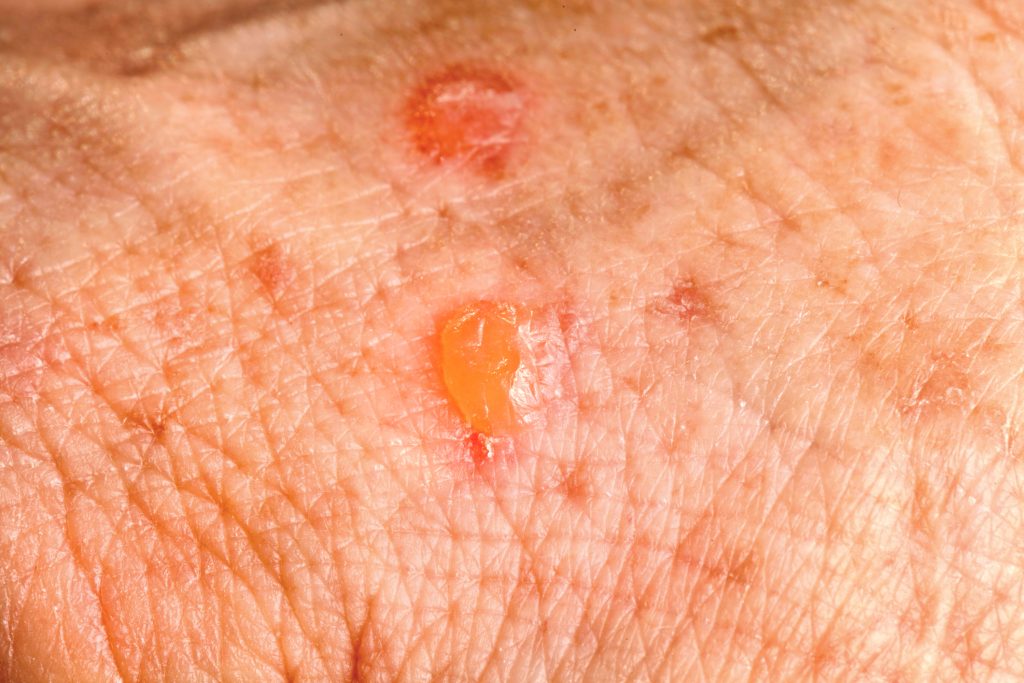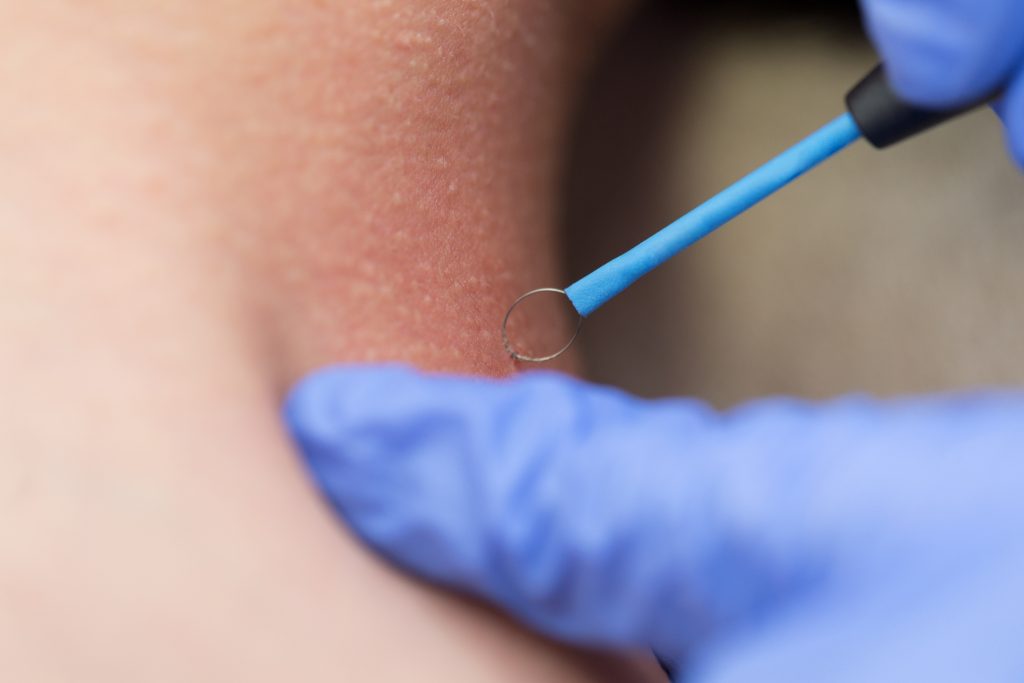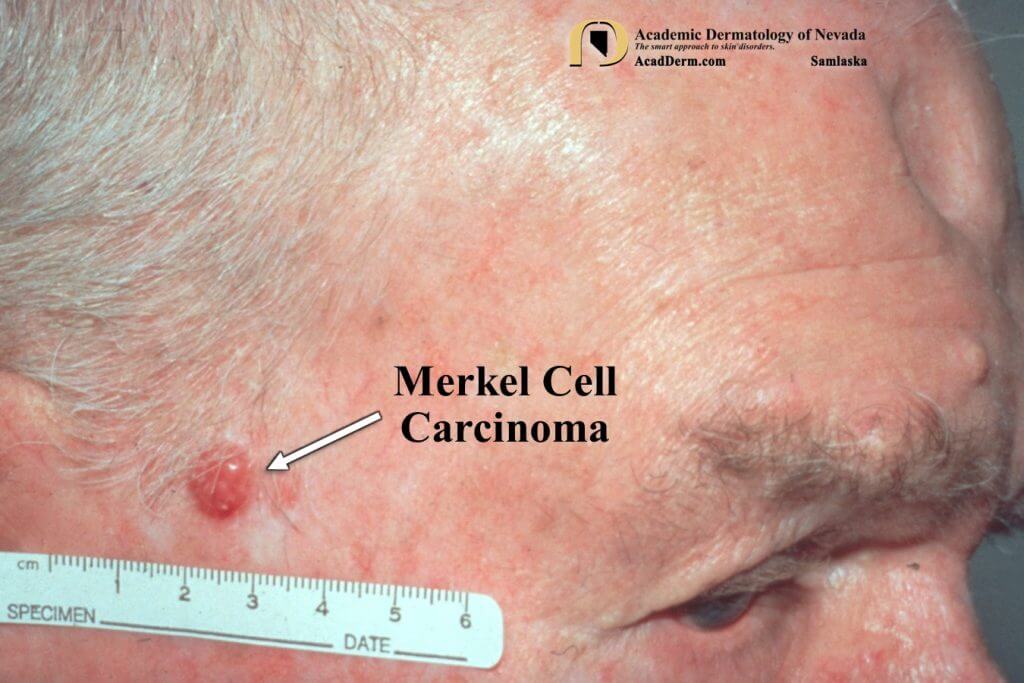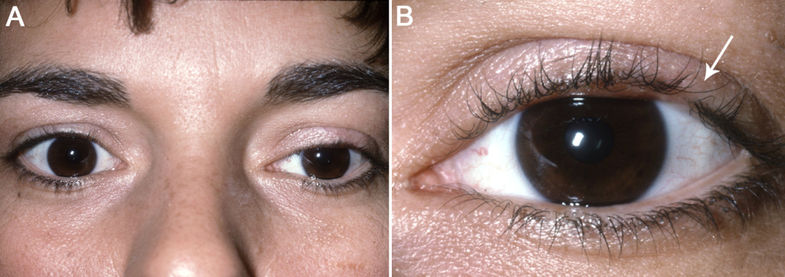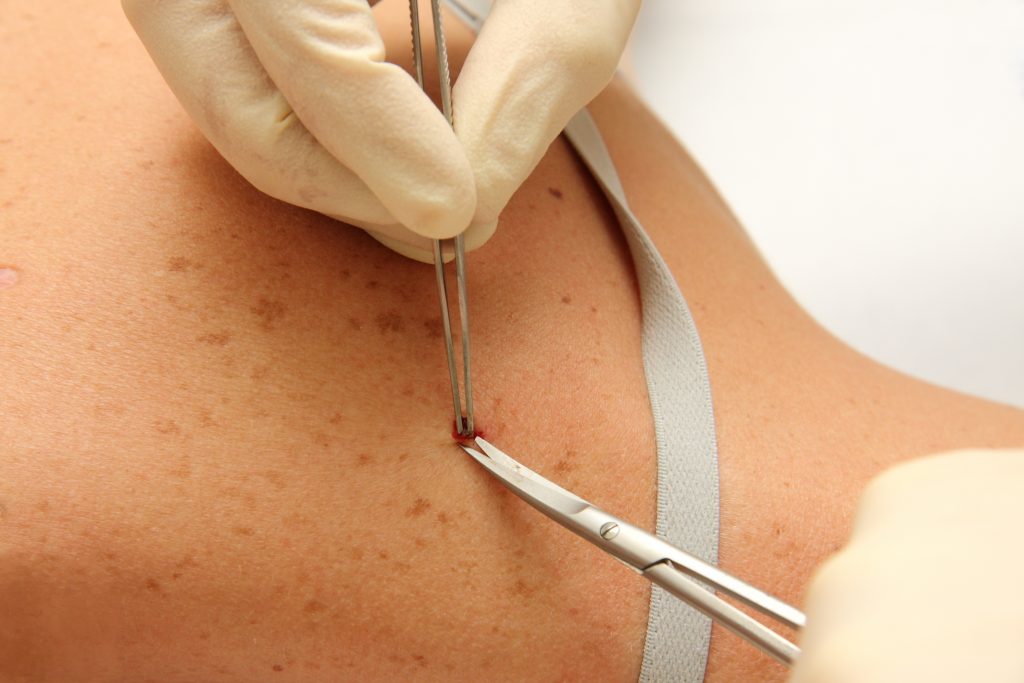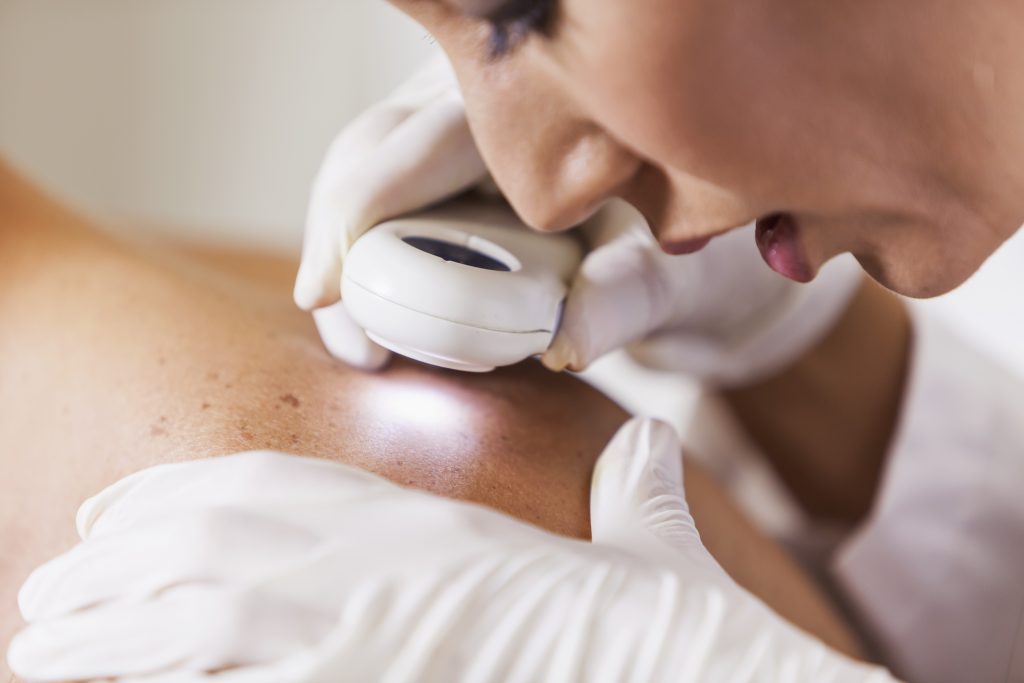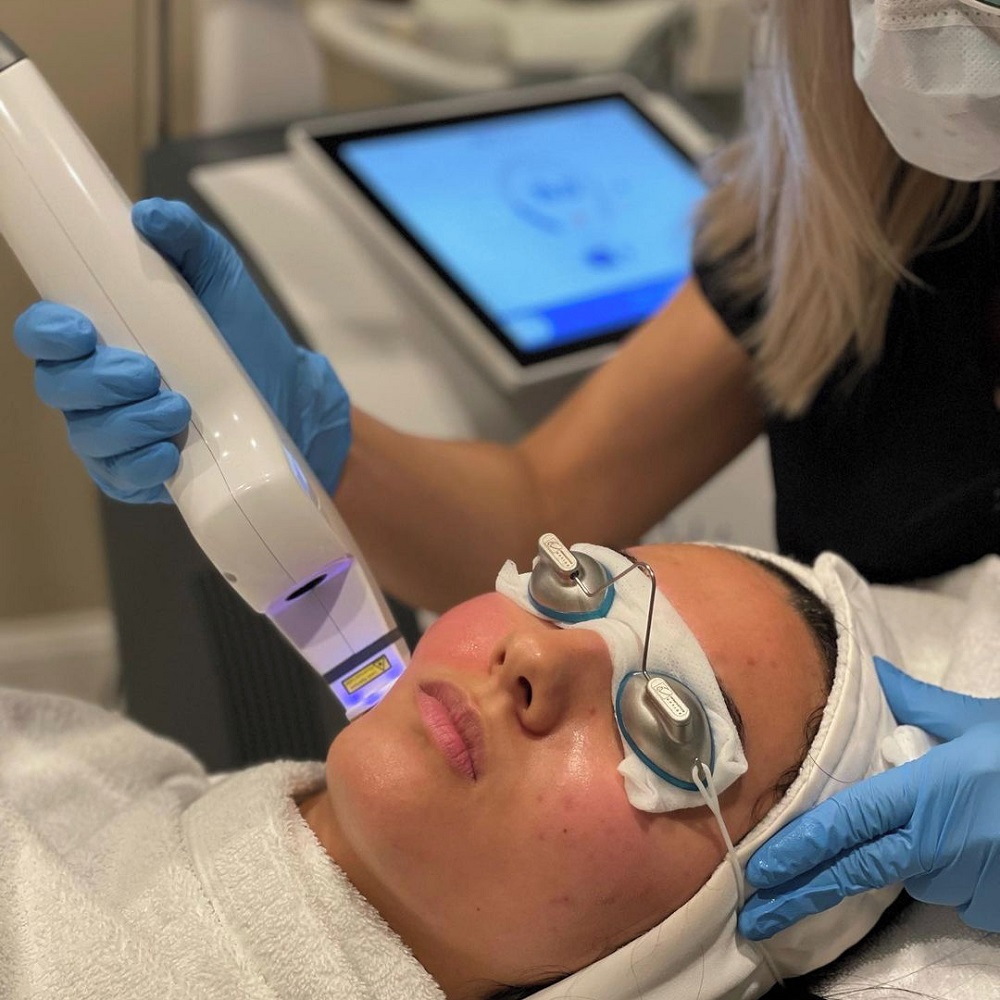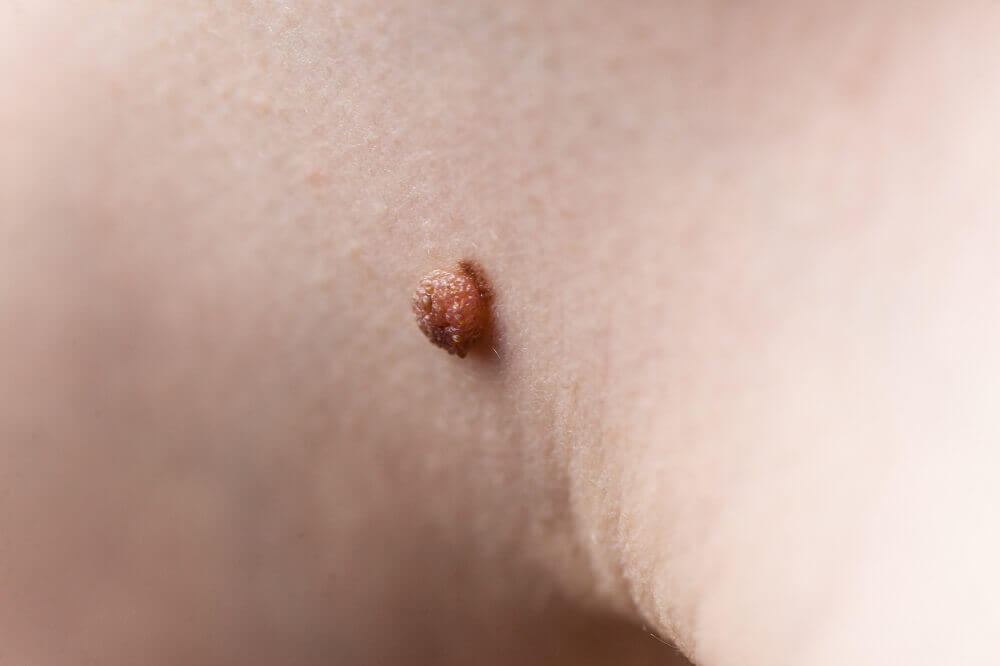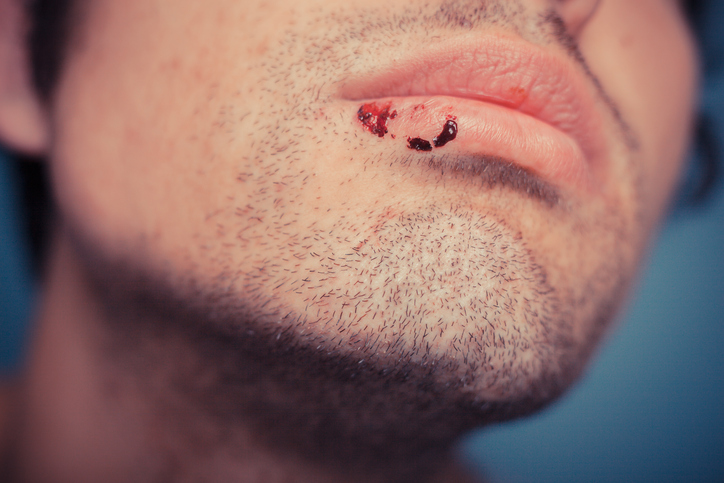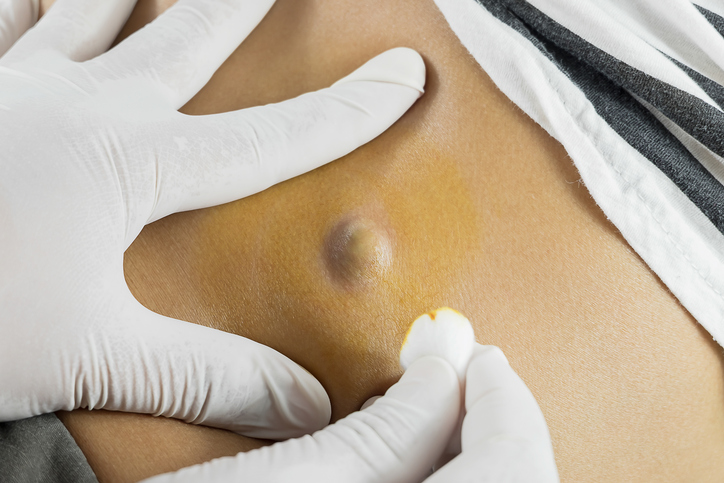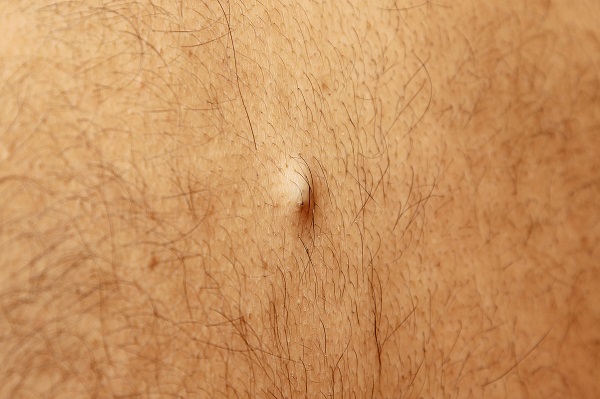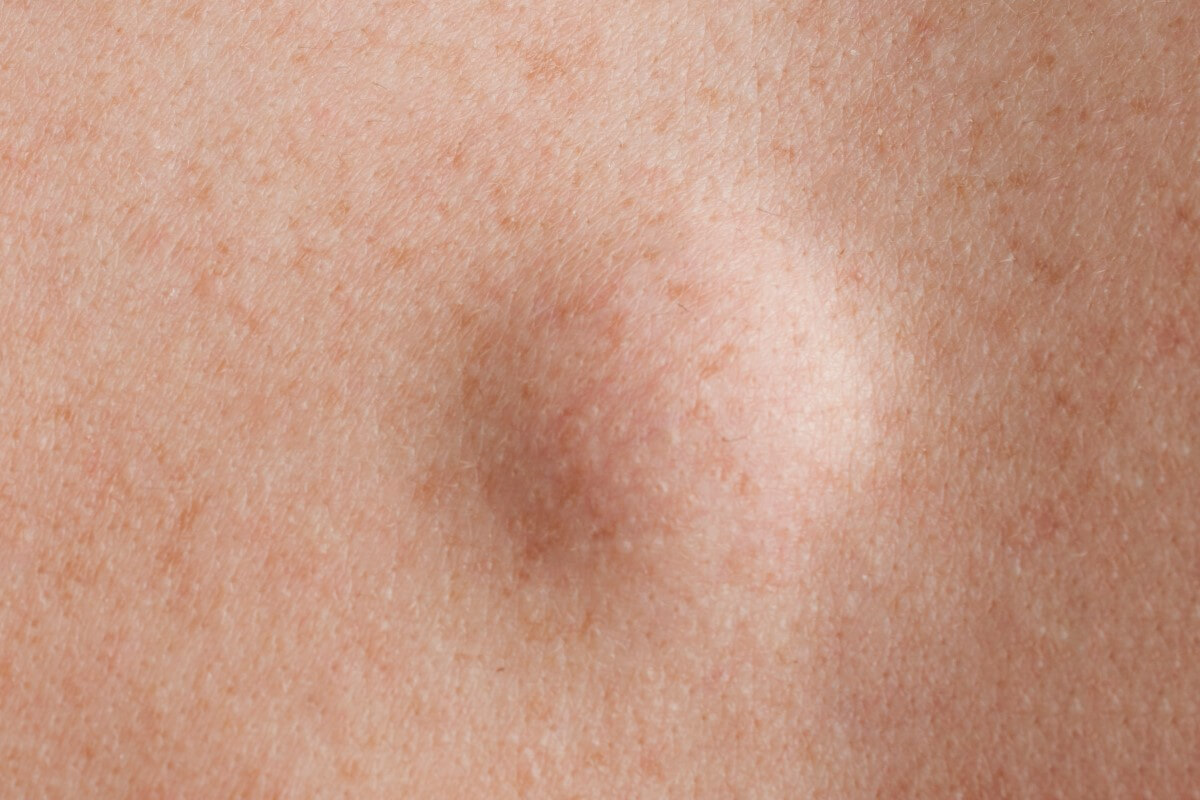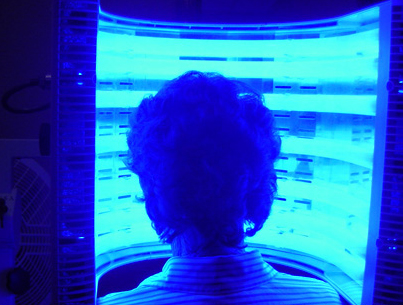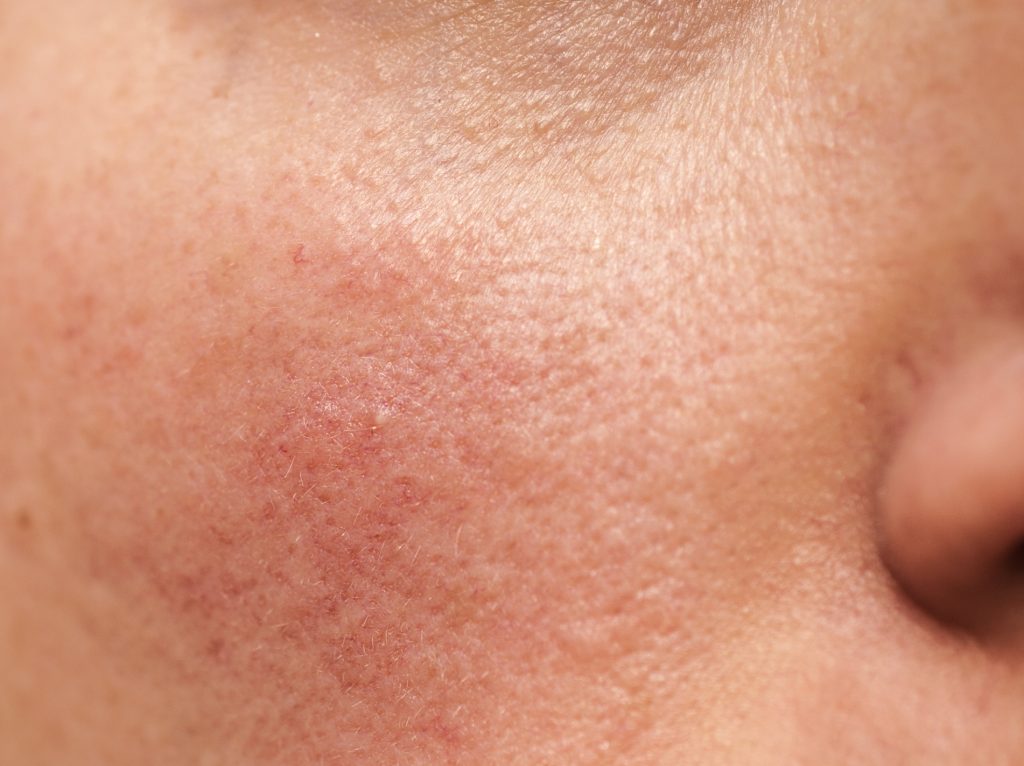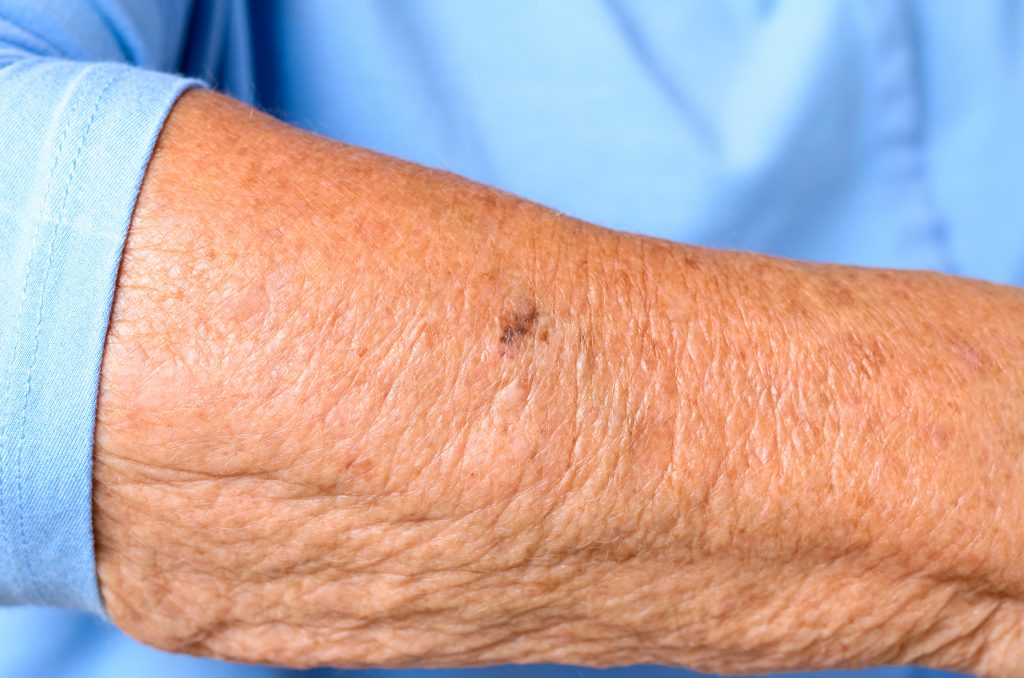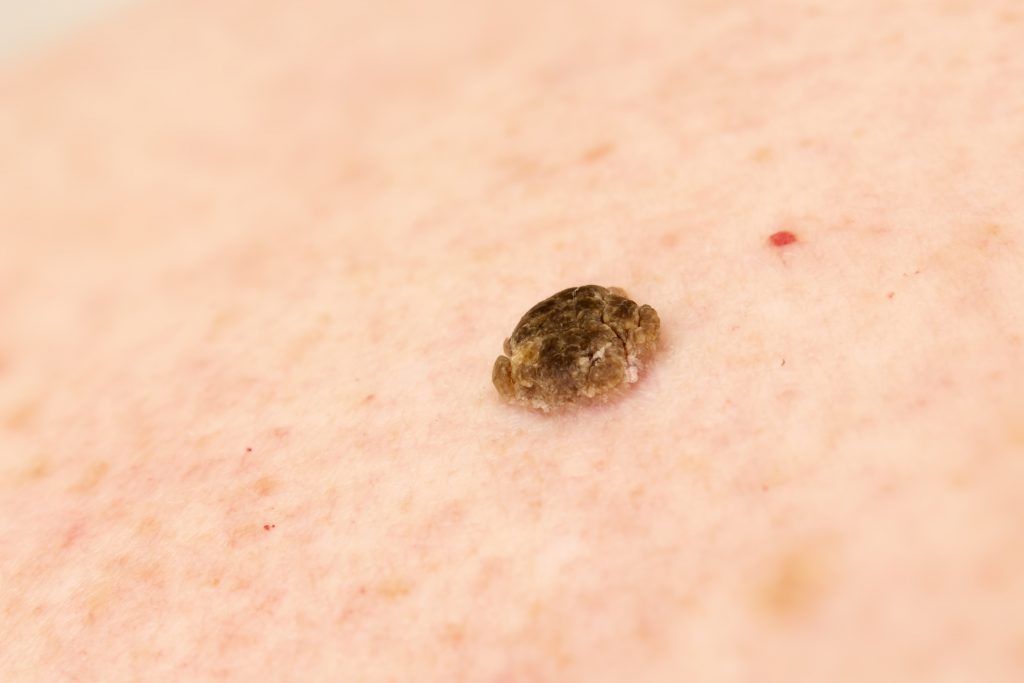Dr. Jennifer Holman received her Doctor of Medicine from the University of Oklahoma College of Medicine in 2004, graduating with special academic distinction. During her residency in the Department of Dermatology at the University of Missouri, she was awarded a Women’s Dermatologic Society mentorship grant to work with the pediatric dermatology department at Northwestern University in Chicago, Illinois. Excelling in every opportunity afforded, she was chief resident in the Department of Dermatology at the University of Missouri when hired by U.S. Dermatology Partners.
“I chose to practice dermatology because a person’s skin is their ‘first impression’ upon the world around them. To improve a patient’s self-esteem, to relieve their fears, or to restore a peaceful night’s rest by treating a skin condition, gives me the opportunity to help restore balance and peace of mind in their life,” Dr. Holman says. She credits her father with instilling in her the idea that “a merry heart does good like medicine,” and she approaches each day with the attitude that a smile and kindness are often as important as any prescription. Combined with her excellent training and experience, the treatment you receive from Dr. Holman is advanced skin care for your health. Your heart. Your life.
Dr. Holman is dually board-certified as a dermatologist and as a Dermatologic Micrographic Surgeon who performs Mohs surgery and delivers advanced and comprehensive care for skin cancer. She also performs multiple cosmetic procedures at Tyler’s Center for Aesthetic and Laser Medicine, which she founded in 2018. There, she and her team provide the full array of laser resurfacing procedures including the sought after BBL, Moxi, and Halo lasers. She is an expert in injectable neurotoxin (Botox), fillers, and PRP, and is a trainer for multiple aesthetic companies. In addition, Dr. Holman serves as regional president over U.S. Dermatology Partners offices in East Texas, South Texas, and Oklahoma.
Proud East Texas natives, Dr. Holman, her husband, and their three teenage children enjoy sharing life with their extended families and being a vital part of their home church and other local ministries.
Badges & Awards
Specialties and Affiliations
- Summa Cum Laude graduate
- Member of Alpha Omega Alpha Medical Honor Society
- Graduated Medical School with Special Distinction for 4.0 GPA
- Women’s Dermatologic Society Mentorship Grant with Pediatric Dermatology Department at Northwestern University in Chicago, IL
- Chief Resident, Department of Dermatology 2007-2008
Featured Articles
- East Texas dermatologist gives advice on maintaining healthy skin
- How Can Colloidal Oatmeal Help Your Skin?
- Why are my pores so big?
- Skin Cancer Warning Signs
- The 12 Best Brightening Cleansers for Super Glowy Skin
- DON'T FRY DAY: How to stay safe, use sunscreen in the sun
- From Earth to Skin: Reviewing the Role of Environmental Factors in Dermatologic Conditions
- How to Get Glass Skin, According to Experts
- Can Tanning Beds Really Help With Skin Conditions Like Psoriasis and Acne?
- Navigating the Complexities of Atopic Dermatitis
- The Atopic Dermatitis Patient Journey From Diagnosis to Management
- Why You Need To Be Extra Careful If You're Sitting In A Window Seat On A Plane
- Can A Trip To The Beach Give You Better Skin? Derms Explain The Effects Of Saltwater.
- How to Soothe a Bad Sunburn
- Picking the 'Right' Sunscreen Isn't as Important as Avoiding These 6 Mistakes
- Trends Shaping Aesthetics in America
- I’m a Dermatologist Who Battled Skin Cancer - Here’s What I Want You To Know About Staying Safe in the Sun
- Dermatologist Who Tanned Warns Others About Skin Cancer
- Tyler Dermatologist Uses Personal Experience with Melanoma to Help Promote Skin Protection
- Will the COVID-19 Booster Interact With Cosmetic Treatments?
- North Texas Dermatologist says COVID-19 Vaccine Fears Shouldn't Keep You Away from Dermal Fillers
- East Texans Battle Long-Haul COVID-19 Side Effect: Hair Loss
- Tyler Dermatologist: 5 Things to Do to Care for Your Skin This Winter
- 5 Things You Wish You’d Done in Your 20s for Better Skin in Your 40s
- Your ‘Maskne’ Might Not Be Acne at All
- Bolstering Business with Neuromodulators
- Understanding Bunny Lines: Is Botox the Problem or the Solution?
Featured Blogs
- MOXI vs. HALO Laser: Which Skin Treatment Is Right for You?
- Best Facial Treatments for Your Age: Tailored Skincare Solutions for Every Decade
- Sculptra vs. Dermal Fillers: A More Natural Approach to Facial Rejuvenation?
- 42 U.S. Dermatology Partners Physicians Recognized by 2024 Super Doctors® Awards
- How to Care for Your Skin Post Laser Treatment
- Best Treatments for Melasma
- U.S. Dermatology Partners Begins Offering Mohs Surgery in Greenville, Texas
- Unraveling the Mystery: Understanding Why Your Skin is Peeling
- Super Doctors 2023 Recognizes 43 U.S. Dermatology Partners Physicians in Peer-Nominated Award
- Shedding Summer Skin Damage: The Power of Laser Skin Resurfacing
- Environmental Causes of Skin Aging
- How to Improve the Appearance of an Aging Neck
- What Is Skin Cycling?
- Non-Surgical Skin Tightening Options
- Should You Include a Face Mask in Your Skincare Routine? Our Sources Say, Yes!
- Thirty-One U.S. Dermatology Partners Dermatologists Across Texas Received Super Doctor & Rising Star Awards
- What Is a HydraFacial & Do I Need One?
- How to Tighten Skin on the Face
- Can Botox Cause Droopy Eyelids?
- How Long Does Botox Last?
- Texas Monthly Recognizes 12 U.S. Dermatology Partners Physicians as Rising Stars
- Dealing with Perioral Dermatitis
- Tips for Avoiding Stress & Other Rosacea Triggers
- CoolTone Available at Center for Aesthetic and Laser Medicine Tyler
- 10 Ways to Get Glowing Skin for Your Valentine’s Date



